Black soy sauce is a popular ingredient in many Asian cuisines, especially in Chinese and Japanese cooking. It adds a rich, savory flavor and a dark color to dishes like stir-fries, marinades, and dipping sauces. However, black soy sauce may not be readily available in all supermarkets or grocery stores, making it challenging for home cooks to prepare their favorite Asian dishes. Fortunately, there are several substitutes for black soy sauce that can be used in a pinch.
One of the best substitutes for black soy sauce is coconut aminos. It is a plant-based alternative that is made from the sap of coconut trees and has a similar flavor to soy sauce. Coconut aminos are gluten-free, soy-free, and contain less sodium than traditional soy sauce. It is an excellent option for those who are allergic to soy or gluten or are trying to reduce their sodium intake. Coconut aminos can be used in the same amount as black soy sauce in recipes like stir-fries, marinades, and dressings.
Another substitute for black soy sauce is tamari sauce. It is a type of soy sauce that is made from fermented soybeans and has a darker color and a richer flavor than regular soy sauce. Tamari sauce is gluten-free and contains no artificial colors or preservatives. It is a great option for those who are allergic to gluten or are looking for a healthier alternative to traditional soy sauce. Tamari sauce can be used in the same amount as black soy sauce in recipes like stir-fries, marinades, and dipping sauces.

Contents
- 1 Understanding Black Soy Sauce
- 2 The Role of Black Soy Sauce in Cooking
- 3 Health Benefits and Nutritional Content
- 4 Common Black Soy Sauce Substitutes
- 5 Detailed Look at Soy Sauce Substitutes
- 6 Homemade Black Soy Sauce Substitutes
- 7 Gluten-Free and Allergy Considerations
- 8 Shopping for Black Soy Sauce Substitutes
- 9 Using Substitutes in Various Dishes
Understanding Black Soy Sauce
Black soy sauce, also known as double black soy sauce, is a popular ingredient in Chinese and Asian cuisine. It is made from fermented soybeans and has a darker color and thicker consistency than regular soy sauce.
One of the main differences between black soy sauce and regular soy sauce is its flavor profile. Black soy sauce has a more savory and umami flavor, which makes it a great addition to dishes that require a stronger taste. It is commonly used in stir-fries, marinades, and dipping sauces.
In Chinese cuisine, black soy sauce is often used to add color to dishes. It can also be used to balance out the sweetness in a dish, especially when combined with sugar or honey.
Black soy sauce is an important ingredient in many traditional Chinese dishes, including Mapo Tofu and Braised Pork Belly. It is also commonly used in Szechuan cuisine, which is known for its bold and spicy flavors.
If you cannot find black soy sauce in your area, there are many alternatives you can try. Coconut aminos, for example, is a plant-based alternative that you can use as a substitute. Tamari, which is a gluten-free soy sauce, is also a great substitute for regular soy sauce.
Overall, black soy sauce is a versatile ingredient that can be used to add depth and flavor to a wide range of dishes. Whether you are cooking traditional Chinese cuisine or experimenting with new flavors, black soy sauce is a must-have ingredient in any kitchen.
The Role of Black Soy Sauce in Cooking
Black soy sauce is a popular ingredient in Asian cuisine, known for its strong umami flavor and dark color. It is commonly used in recipes such as marinades, stir-fries, noodles, fried rice, sushi, tofu, braised meat, seafood dishes, soups, dressings, and dipping sauces.
Black soy sauce is made by fermenting soybeans, wheat, and salt. It is darker and thicker than regular soy sauce and has a more intense flavor. It is often used in combination with other sauces like oyster sauce, hoisin sauce, and fish sauce to create complex flavors in dishes.
In marinades, black soy sauce is used to add depth and richness to the flavor of meat, poultry, or seafood. It is often combined with other ingredients like garlic, ginger, sugar, and rice vinegar to create a balanced marinade that tenderizes and flavors the meat.
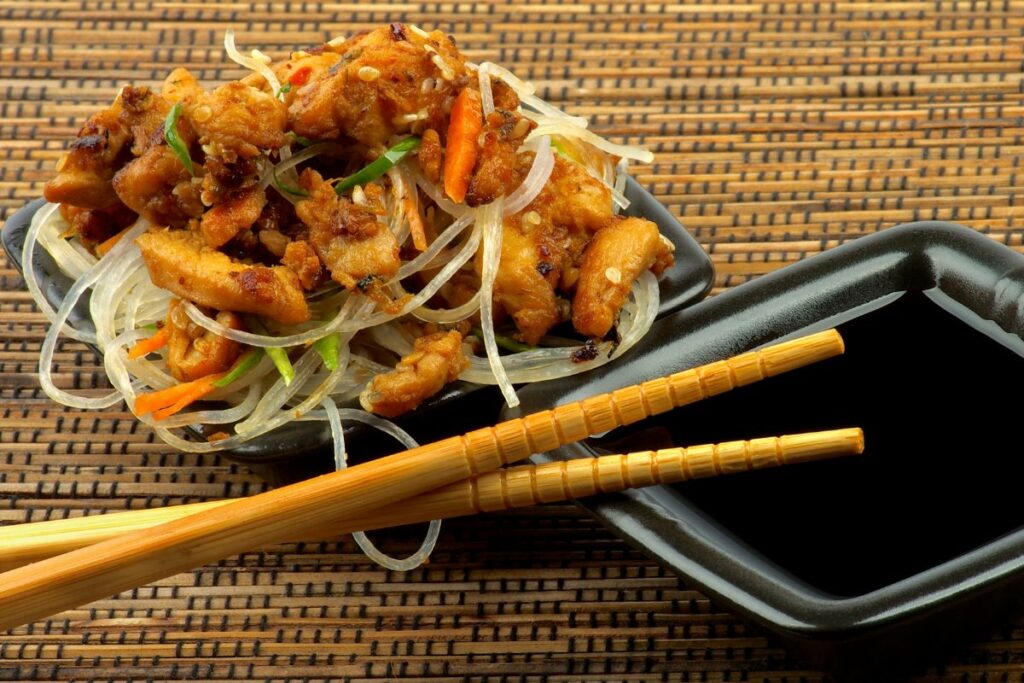
In stir-fries and noodles, black soy sauce is used to add color and flavor to the dish. It is often added at the end of cooking to prevent it from burning and to preserve its flavor.
In fried rice and sushi, black soy sauce is used to add color and flavor to the dish. It is often mixed with other ingredients like sesame oil, rice vinegar, and sugar to create a flavorful dressing for the rice.
In tofu dishes, black soy sauce is used to add depth and richness to the flavor of the tofu. It is often combined with other ingredients like garlic, ginger, and scallions to create a flavorful sauce that complements the tofu.
In braised meat and seafood dishes, black soy sauce is used to add richness and depth to the flavor of the dish. It is often combined with other ingredients like star anise, cinnamon, and ginger to create a complex and flavorful broth.
In soups, black soy sauce is used to add depth and richness to the flavor of the broth. It is often combined with other ingredients like miso paste, dashi, and mirin to create a flavorful soup base.
In dressings and dipping sauces, black soy sauce is used to add depth and richness to the flavor of the sauce. It is often combined with other ingredients like rice vinegar, sesame oil, and sugar to create a flavorful dressing or dipping sauce.
Overall, black soy sauce is a versatile ingredient that adds depth and richness to the flavor of many Asian dishes. Its strong umami flavor and dark color make it a popular ingredient in many recipes.
Health Benefits and Nutritional Content
Black soy sauce is not only a flavorful condiment but also a source of various health benefits. This sauce is made from fermented soybeans, wheat, and salt, which gives it a unique umami taste and a dark color. Here are some of the health benefits and nutritional content of black soy sauce:
Protein and Minerals
Black soy sauce is a good source of protein and minerals. One tablespoon of black soy sauce contains about 1 gram of protein and 10% of the daily value (DV) of iron. Iron is an essential mineral that helps transport oxygen throughout the body and is important for energy production.
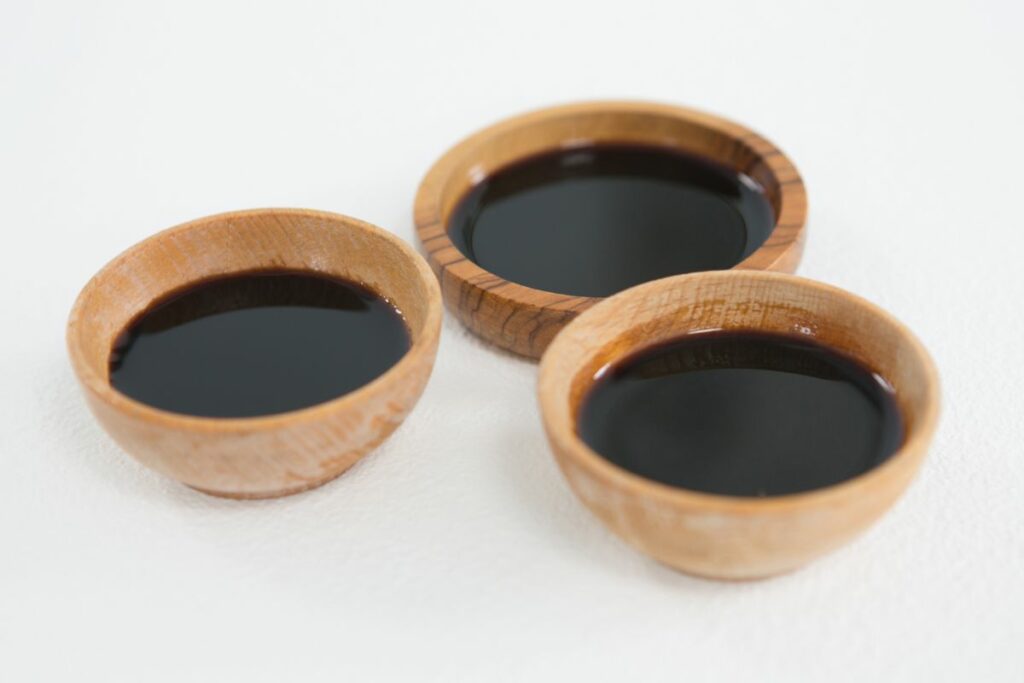
Magnesium
Black soy sauce also contains magnesium, a mineral that is important for bone health, muscle function, and nerve function. One tablespoon of black soy sauce contains about 6% of the DV of magnesium.
Antioxidants and Anti-inflammatory Properties
Black soy sauce contains antioxidants that help protect the body from damage caused by free radicals. Free radicals are unstable molecules that can cause oxidative stress and contribute to chronic diseases such as cancer and heart disease. Black soy sauce also has anti-inflammatory properties that can help reduce inflammation in the body.
Low Sodium Content
Compared to other types of soy sauce, black soy sauce has a lower sodium content. This makes it a good option for people who are watching their sodium intake. However, it is still important to use black soy sauce in moderation as it still contains some salt.
Overall, black soy sauce is a flavorful and nutritious condiment that can provide various health benefits. It is a good source of protein, iron, magnesium, antioxidants, and has anti-inflammatory properties.
Common Black Soy Sauce Substitutes
Black soy sauce is a staple ingredient in many Asian cuisines, but it can be challenging to find in some areas. Luckily, there are several alternatives that can be used as a substitute. Here are some of the most common black soy sauce substitutes:
1. Dark Soy Sauce
Dark soy sauce is a more concentrated and thicker version of regular soy sauce. It has a darker color and a slightly sweet taste. It is an excellent substitute for black soy sauce in marinades, stir-fries, and dipping sauces. However, it is important to note that dark soy sauce contains more salt than regular soy sauce, so adjust the amount accordingly.

2. Teriyaki Sauce
Teriyaki sauce is a popular Japanese sauce made from soy sauce, sugar, and mirin. It has a sweet and savory taste and a dark color that is similar to black soy sauce. It is an excellent substitute for black soy sauce in stir-fries, marinades, and glazes.
3. Oyster Sauce
Oyster sauce is a thick, brown sauce made from oysters, soy sauce, and sugar. It has a sweet and salty taste and a dark color that is similar to black soy sauce. It is an excellent substitute for black soy sauce in stir-fries and marinades.
4. Worcestershire Sauce
Worcestershire sauce is a popular sauce made from vinegar, molasses, anchovies, and various spices. It has a savory taste and a dark color that is similar to black soy sauce. It is an excellent substitute for black soy sauce in marinades and dipping sauces.
5. Coconut Aminos
Coconut aminos is a plant-based alternative to soy sauce that is made from coconut sap. It has a sweet and salty taste and a dark color that is similar to black soy sauce. It is an excellent substitute for black soy sauce in stir-fries, marinades, and dipping sauces.
When substituting black soy sauce with any of these alternatives, it is important to adjust the amount according to taste. Start with a small amount and add more as needed. Also, keep in mind that each substitute has its unique taste, so the final dish may taste slightly different from the original recipe.
Detailed Look at Soy Sauce Substitutes
Soy sauce is a versatile condiment that is used in many dishes. It can be used as a marinade, a seasoning, a dipping sauce, and more. However, if you are out of soy sauce or have a soy allergy, there are many substitutes you can use. Here are some of the most popular soy sauce substitutes:
- Dark Soy Sauce: Dark soy sauce is a thicker and sweeter version of regular soy sauce. It has a more intense flavor and is often used in marinades, stews, and braises. If you cannot find dark soy sauce, you can use regular soy sauce mixed with a little bit of molasses or brown sugar.

- Light Soy Sauce: Light soy sauce is a thinner and saltier version of regular soy sauce. It is often used in stir-fries, soups, and dipping sauces. If you cannot find light soy sauce, you can use regular soy sauce mixed with a little bit of water.
- Oyster Sauce: Oyster sauce is a thick and savory sauce made from oysters, soy sauce, and sugar. It is often used in stir-fries and marinades. If you cannot find oyster sauce, you can use a mixture of soy sauce and sugar.
- Hoisin Sauce: Hoisin sauce is a thick and sweet sauce made from soybeans, sugar, vinegar, and spices. It is often used in stir-fries, marinades, and as a dipping sauce. If you cannot find hoisin sauce, you can use a mixture of soy sauce, sugar, and a little bit of ketchup.
- Tamari: Tamari is a gluten-free soy sauce that is often used as a substitute for regular soy sauce. It has a milder and less salty flavor than regular soy sauce. If you cannot find tamari, you can use regular soy sauce.
- Teriyaki Sauce: Teriyaki sauce is a sweet and savory sauce made from soy sauce, sugar, and mirin. It is often used as a marinade and a glaze for grilled meats and vegetables. If you cannot find teriyaki sauce, you can use a mixture of soy sauce, sugar, and mirin.
- Worcestershire Sauce: Worcestershire sauce is a tangy and savory sauce made from vinegar, molasses, and spices. It is often used in marinades, stews, and as a condiment. If you cannot find Worcestershire sauce, you can use a mixture of soy sauce, vinegar, and a little bit of molasses.
- Miso: Miso is a Japanese fermented soybean paste that is often used in soups, marinades, and dressings. It has a salty and savory flavor. If you cannot find miso, you can use a mixture of soy sauce and a little bit of sugar.
- Coconut Aminos: Coconut aminos is a soy-free and gluten-free alternative to soy sauce. It is made from coconut sap and has a sweet and salty flavor. If you cannot find coconut aminos, you can use a mixture of soy sauce, sugar, and a little bit of vinegar.
- Sweet Soy Sauce: Sweet soy sauce is a thick and sweet sauce made from soy sauce and sugar. It is often used in marinades, dipping sauces, and as a condiment. If you cannot find sweet soy sauce, you can use a mixture of soy sauce and sugar.
- Mushroom Flavored Soy Sauce: Mushroom flavored soy sauce is a soy sauce that has been infused with mushroom flavor. It is often used in stir-fries, soups, and marinades. If you cannot find mushroom flavored soy sauce, you can use regular soy sauce mixed with a little bit of mushroom powder.
- Mushroom Flavored Dark Soy: Mushroom flavored dark soy is a thicker and sweeter version of mushroom flavored soy sauce. It has a more intense flavor and is often used in stews and braises. If you cannot find mushroom flavored dark soy, you can use regular dark soy sauce mixed with a little bit of mushroom powder.
- Maggi Seasoning: Maggi seasoning is a liquid seasoning made from water, salt, wheat gluten, and flavor enhancers. It has a savory and slightly sweet flavor and is often used in soups, stews, and marinades. If you cannot find Maggi seasoning, you can use a mixture of soy sauce, sugar, and a little bit of vinegar.
Overall, there are many soy sauce substitutes that you can use in your cooking. Whether you are out of soy sauce or have a soy allergy, there is a substitute that will work for you.
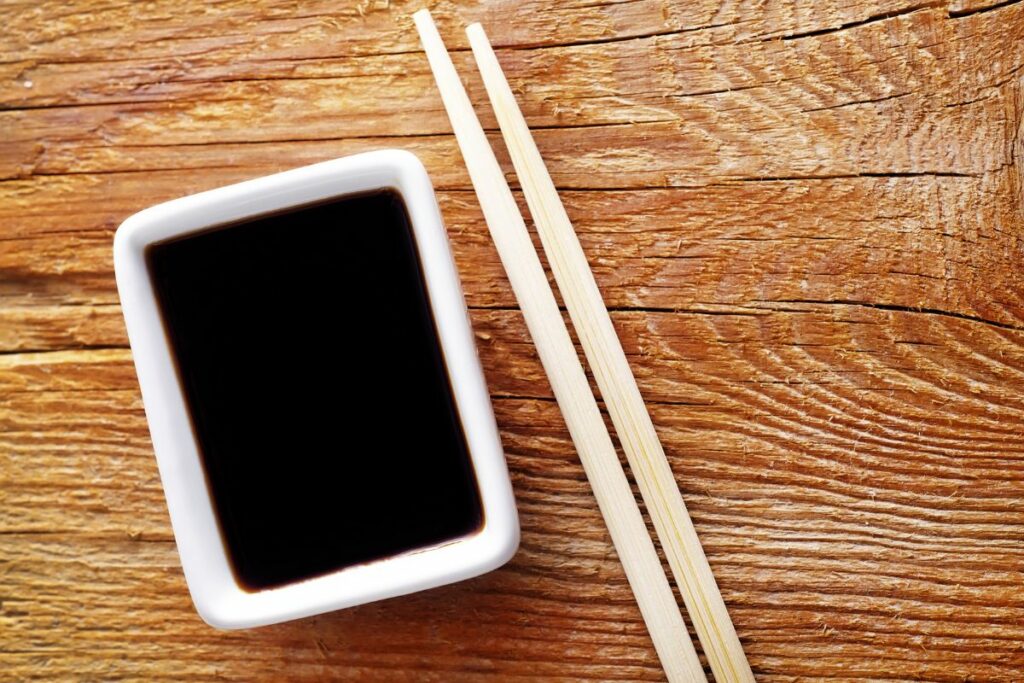
Homemade Black Soy Sauce Substitutes
Black soy sauce is a staple ingredient in many Asian dishes, but what if you don’t have it on hand? Fortunately, there are several homemade black soy sauce substitutes that you can make with ingredients you probably already have in your pantry.
Recipe 1: Garlic and Molasses Substitute
This homemade black soy sauce substitute is made with garlic, molasses, and a few other simple ingredients. Here’s how to make it:
| Ingredients | Amount |
|---|---|
| Garlic, minced | 2 cloves |
| Molasses | 1/4 cup |
| Soy sauce | 1/4 cup |
| Brown sugar | 1 tablespoon |
| Water | 1 tablespoon |
- In a small saucepan, sauté the minced garlic until fragrant.
- Add the molasses, soy sauce, brown sugar, and water to the saucepan.
- Bring the mixture to a boil, then reduce the heat and let it simmer for 10-15 minutes, or until it thickens to the consistency of soy sauce.
- Let the mixture cool before using it as a black soy sauce substitute.
Recipe 2: Palm Sugar and Balsamic Vinegar Substitute
This homemade black soy sauce substitute is made with palm sugar and balsamic vinegar, which give it a sweet and tangy flavor. Here’s how to make it:
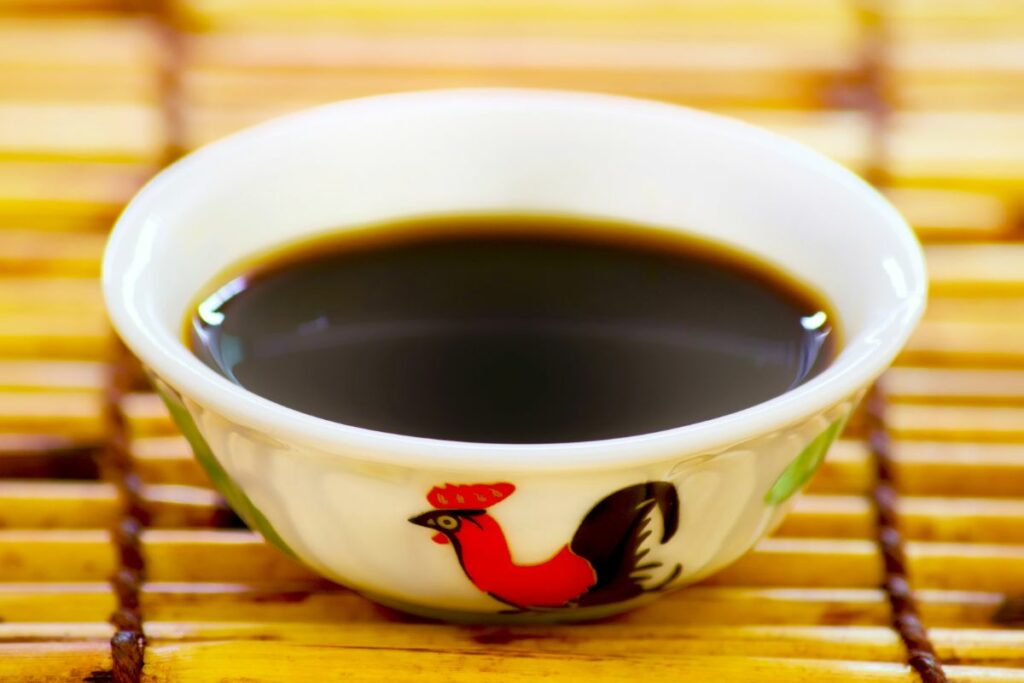
| Ingredients | Amount |
|---|---|
| Palm sugar | 1/2 cup |
| Soy sauce | 1/2 cup |
| Balsamic vinegar | 1/4 cup |
| Water | 1/4 cup |
- In a small saucepan, heat the palm sugar and water over medium heat until the sugar dissolves.
- Add the soy sauce and balsamic vinegar to the saucepan and stir to combine.
- Bring the mixture to a boil, then reduce the heat and let it simmer for 10-15 minutes, or until it thickens to the consistency of soy sauce.
- Let the mixture cool before using it as a black soy sauce substitute.
Recipe 3: Fish Sauce and Onion Substitute
This homemade black soy sauce substitute is made with fish sauce and onion, which give it a salty and savory flavor. Here’s how to make it:
| Ingredients | Amount |
|---|---|
| Fish sauce | 1/2 cup |
| Soy sauce | 1/2 cup |
| Onion, chopped | 1/2 cup |
| Vinegar | 1/4 cup |
| Sugar | 1 tablespoon |

- In a small saucepan, sauté the chopped onion until it’s soft and translucent.
- Add the fish sauce, soy sauce, vinegar, and sugar to the saucepan.
- Bring the mixture to a boil, then reduce the heat and let it simmer for 10-15 minutes, or until it thickens to the consistency of soy sauce.
- Let the mixture cool before using it as a black soy sauce substitute.
These homemade black soy sauce substitutes can be used in a variety of dishes, just like traditional black soy sauce. They add a rich, savory flavor to stir-fries, marinades, and dipping sauces. Simply use them as you would regular black soy sauce, adjusting the amount to taste.
Gluten-Free and Allergy Considerations
For those who follow a gluten-free diet or have celiac disease, finding a black soy sauce substitute can be a challenge. Most soy sauces contain wheat, a common source of gluten. However, there are several gluten-free soy sauce alternatives available that can be used as a substitute for black soy sauce.
One popular option is tamari, which is made from soybeans and is gluten-free. Tamari has a similar taste and texture to soy sauce, making it an excellent substitute in recipes that call for black soy sauce. Another gluten-free soy sauce alternative is coconut aminos sauce, which is made from the sap of coconut trees and is also soy-free and vegan.
For those with a soy allergy, there are several alternatives to black soy sauce that can be used in recipes. One option is fish sauce, which has a similar salty and savory flavor to soy sauce. However, it is important to note that fish sauce is not suitable for vegetarians or vegans. Another alternative is Worcestershire sauce, which is made from vinegar, molasses, and spices and has a similar umami flavor to soy sauce.
Overall, when looking for a black soy sauce substitute, it is important to consider any dietary restrictions or allergies. There are several gluten-free and soy-free alternatives available that can be used in recipes without sacrificing flavor.
Shopping for Black Soy Sauce Substitutes
When shopping for black soy sauce substitutes, it’s important to keep in mind the flavor profile you’re looking for and the availability of ingredients in your area. Here are some tips to help you find the perfect alternative:
Check Your Local Grocery Store
Many grocery stores carry a variety of soy sauce substitutes, including coconut aminos, tamari, and hoisin sauce. Check the Asian food aisle or the health food section to find these alternatives. If you’re having trouble locating them, don’t hesitate to ask a store employee for assistance.
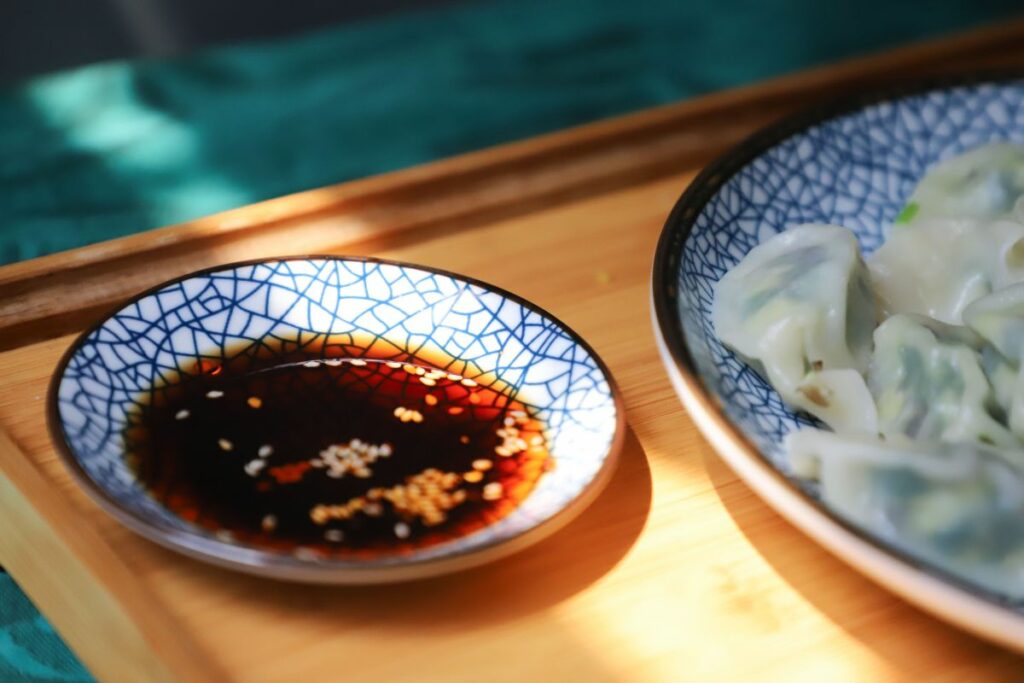
Look for Specialty Stores
If you’re looking for a wider selection of black soy sauce substitutes, consider visiting a specialty store that specializes in Asian cuisine. These stores often carry a variety of sauces and condiments that may not be available at your local grocery store.
Consider Online Shopping
If you’re unable to find a suitable substitute at your local grocery store or specialty store, consider shopping online. Many online retailers offer a wide selection of soy sauce substitutes, including rare and hard-to-find ingredients.
Read Reviews
Before purchasing a black soy sauce substitute, read reviews from other customers to get an idea of the flavor and quality of the product. Look for reviews that specifically mention using the substitute in Asian cuisine to ensure that it will be a good fit for your recipe.
Experiment with Different Substitutes
Don’t be afraid to experiment with different black soy sauce substitutes to find the one that best suits your taste preferences. Try using coconut aminos, tamari, or hoisin sauce in your favorite recipes to see which one you like best. You may even discover a new favorite flavor combination!
Using Substitutes in Various Dishes
When it comes to substituting black soy sauce in various dishes, there are plenty of options available. Here are some suggestions for using substitutes in different types of dishes:
Stir-Fries and Fried Rice
Stir-fries and fried rice are some of the most popular dishes that call for black soy sauce. For these dishes, teriyaki sauce or light soy sauce can be used as a substitute. Both of these sauces will give the dish a similar color and flavor to black soy sauce.
Noodles
When it comes to noodle dishes, hoisin sauce or oyster sauce can be used as a substitute for black soy sauce. These sauces will add a similar depth of flavor to the dish as black soy sauce.
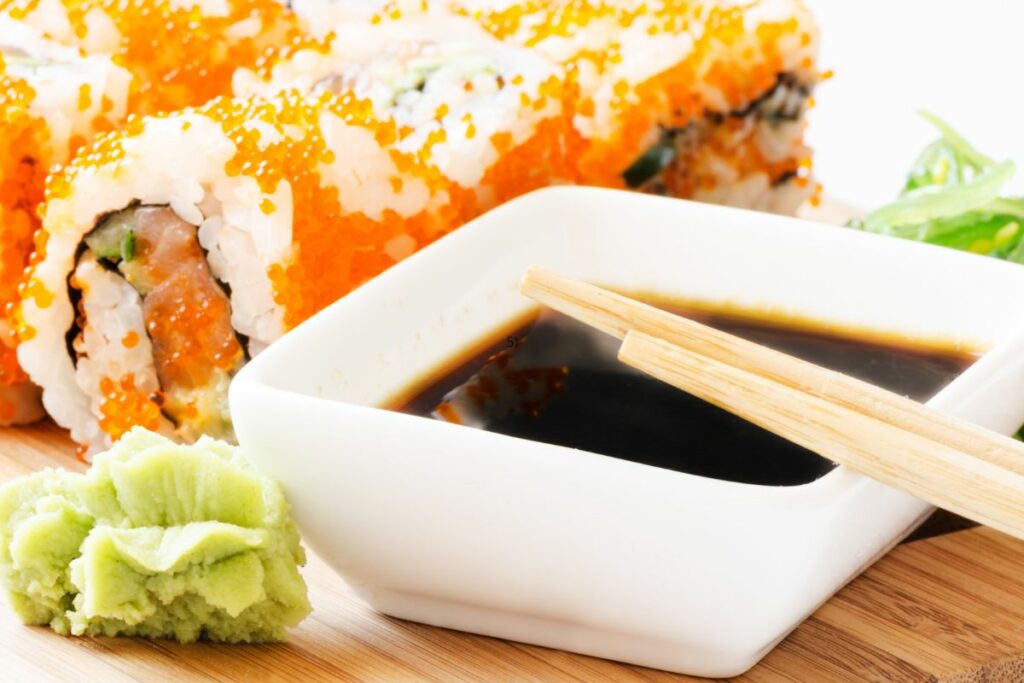
Tofu and Braised Meat
For dishes that call for black soy sauce in marinades or braising liquid, dark miso paste or Worcestershire sauce can be used as a substitute. Both of these ingredients will add a similar umami flavor to the dish.
Seafood Dishes
For seafood dishes, fish sauce or soy sauce can be used as a substitute for black soy sauce. These sauces will add a similar salty flavor to the dish.
Soups and Dressings
For soups and dressings that call for black soy sauce, tamari sauce or coconut aminos can be used as a substitute. These sauces will add a similar depth of flavor to the dish.
Sushi
For sushi dishes, ponzu sauce or rice vinegar can be used as a substitute for black soy sauce. These ingredients will add a similar acidic flavor to the dish.
Dipping Sauces
For dipping sauces that call for black soy sauce, soy sauce or teriyaki sauce can be used as a substitute. These sauces will add a similar salty and sweet flavor to the dish.
Overall, there are plenty of substitutes for black soy sauce that can be used in a variety of dishes. By experimenting with different ingredients, you can find the perfect substitute for your favorite recipes.
